Lecture
Invalid optimization
Contextual advertising was set up on 400 keywords, many of which are targeted, but do not sell: just colored balls, colored balls from other manufacturers, related to the topic but low conversion, so there were calls but a conversion to the sale below: interested in the differences of product benefits, etc.
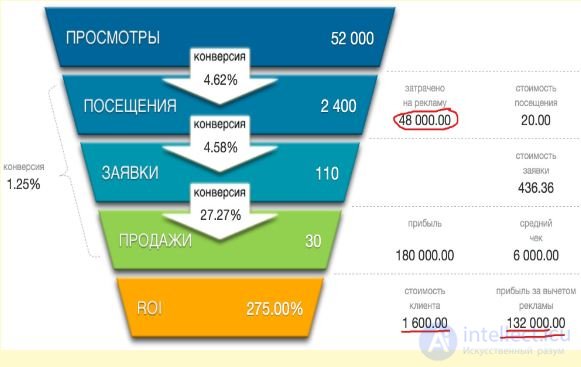
optimal internet marketing
Fully compliant with key requests,
only target customers need visits, which leads to an increase in the number of applications,
customer cost reduction
Gradual reduction of paid channels (but not a complete rejection of advertising)
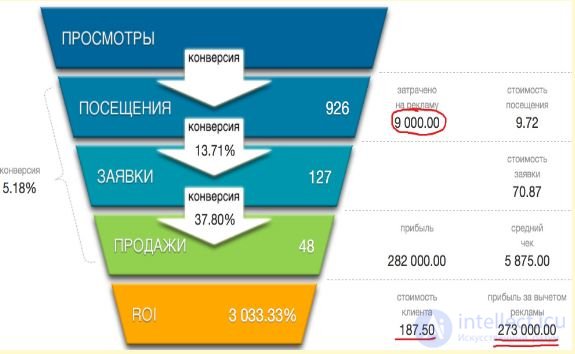
in this case, the important indicator is ROI And conversion
Conversion in Internet marketing is the ratio of the number of site visitors who performed any target actions on it (hidden or direct instructions from advertisers, merchants, content creators — purchase, registration, subscription, visiting a certain page of the site, clicking on an advertising link), to the total number of visitors to the site, expressed as a percentage. For example: you have an online store selling any products. Let's say that 500 unique visitors come to it per day. During this day, 7 different purchases are made in your store. In this case, the percentage of conversion of visitors and buyers is 1.4: (7 purchases / 500 visitors) * 100 = 1.4%.
Successful conversion is treated differently by sellers, advertisers, or content providers. For example, for a seller, a successful conversion would mean a purchase operation by a consumer who became interested in the product by clicking on the appropriate ad banner. For a content provider, a successful conversion can be the registration of visitors to the site, a subscription to the mailing list, downloading software or any other actions expected from visitors.
For sites whose purpose is to motivate to act offline (such as, for example, visiting a store or a phone call), the conversion calculation becomes a difficult task - shopping trips are not tracked on the site. In this case, the solution may be:
Among the many methods of increasing conversion, the following are the most significant:
ROI (from eng. Return on investment ) or ROR (eng. Rate of return ) is a financial ratio illustrating the level of profitability or loss of a business, taking into account the amount of investment made in this business. ROI is usually expressed as a percentage, less often as a fraction. This indicator may also have the following names: return on invested capital, return on investment, return, return on invested capital, rate of return.
The ROI is the ratio of the amount of profit or loss to the amount of investment. The profit value can be interest income, profit / loss on accounting, profit / loss on management accounting or net profit / loss. The value of the sum of investments can be assets, capital, the amount of the principal debt of a business and other investments expressed in money.
When it comes to evaluating the effectiveness of advertising campaigns, one of the main metrics is ROI.
ROI is the rate of return on marketing activity costs. High return on investment suggests that advertising brings you a profit.
In this article we will look at two options for calculating ROI (ROMI):
In addition, in the article I will share formulas and ready-made reports that you can use to analyze your own advertising campaigns.
What is the difference between ROI and ROMI?
Actually, the difference between the metrics is only in their name. The calculations themselves do not change. Confusion arose because the term ROI (Return On Investment) is more general.
Although ROMI (Return on Marketing Investment) is, from my point of view, a more universal metric name.
To calculate ROMI, you only need to know:
For convenience of calculation, profits are usually taken without taking into account operating expenses.
Formula calculation ROMI:
ROMI = (profit - expenses) / expenses * 100%
Example:
Cost of services - $ 1250. Margin - 50%. The advertising budget of the advertising campaign was $ 400. Then, (625 - 400) / 400 = 0.56. ROI = 0.56 * 100% = 56%.
As an example, I propose to consider building sales through email-mailing at an online clothing store.
Task:
Define ROMI for advertising campaigns that are aimed at attracting new subscribers (not sales).
To address this issue, we need to understand how much we earn on average from one subscriber.
To determine the value of one subscriber, it is enough to analyze the current results and determine the solvency of our base.
For calculation, 2 metrics are enough:
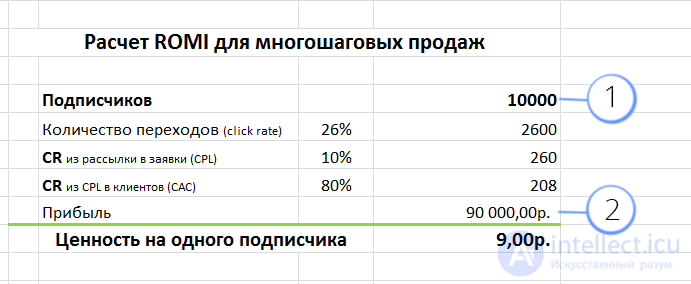
Also, knowing the conversion rate for incoming applications (1) and acquired customers (2), one can calculate the maximum cost we are willing to pay for registration (CPL) or a new customer (CAC).
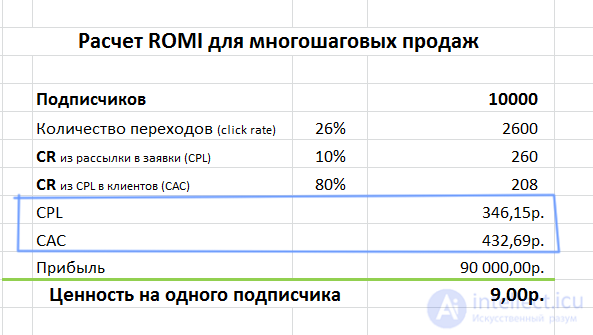
Now, having calculated the value of one subscriber, you can predict ROMI for an advertising campaign.
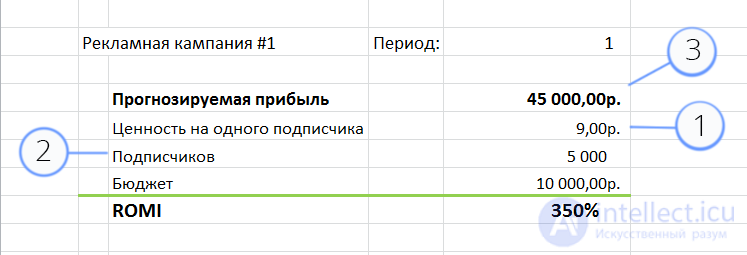
For this,
Then we compare the profit with the cost of the advertising campaign, and we obtain the coefficient ROMI.
One of the advantages of this metric is that in conditions of a limited budget it becomes possible to redistribute it in favor of the most profitable advertising channels.
When carrying out advertising campaigns, always choose KPIs that are assigned to end goals. Basically it is money.
Comments
To leave a comment
seo, smo, monetization, basics of internet marketing
Terms: seo, smo, monetization, basics of internet marketing